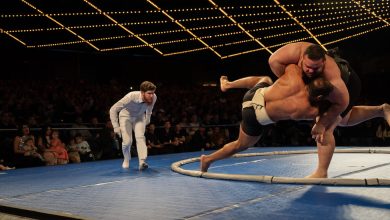Rangers, Devils and Islanders All Looking to Better Days

It’s 29.5 miles from Elmont, N.Y., to Newark, and in this tiny corridor of the United States exist three of the N.H.L.’s 32 teams: the Devils, the Rangers, and the Islanders, soon to move to Elmont from their creaking Long Island home in Uniondale.
With this overabundance of hockey — almost 10 percent of the N.H.L. — the New York metropolitan area should be hockey-mad. But hockey and the Big Apple and its environs have had a problematic relationship at times, and this has been one of those times.
The Rangers? They have missed playoffs three of the last four years. They last hoisted the Stanley Cup in 1994, ending a 54-year drought and drowning out those nasty Islanders’ fans who used to chant “1940!” to memorialize the Rangers’ previous championship.
The Devils? Their legacy is in the rearview mirror, having failed to make the playoffs in eight of the last nine years after losing the 2012 final, and suffering three straight losing seasons. It’s quite a comedown from a team that captured three Stanley Cups, their last in the 2002-3 season.
The Islanders? Not bad. A playoff team the last three campaigns, and still holders of an impressive record: They are the last major North American sports team to have won four straight championships, which they capped in the 1982-83 season.
What has also made that record extra special is that, 10 years earlier, at their founding, they compiled the most losses of any team in N.H.L. history.
Now there is a vast wasteland of broken sticks, dirty towels and unsharpened skates stretching from Long Island to Midtown Manhattan to New Jersey. Take the Devils. In their current nine-year stretch of frustration, their fans at home have seen them win barely half their games — about 55 percent. Not much better on the other side of the Hudson, where the Rangers have given Madison Square Garden fans a victory 55 percent of the time in the past four years.
But the Islanders have done exceptionally well at home these three last playoff years, capturing 71 percent of their games. It could take them a while to get moving this season, though — they play their first 13 games on the road and won’t be in their new arena until late November. The Isles are a pretty good road team, having captured about 55 percent of their away games over these last three years. They could finish the season strong, since 41 of their final 69 games are at home and their fans already have bought 15,000 season tickets.
It must be an odd feeling to be a New York or New Jersey team and get booed in your own bailiwick, which is what happens when this trio visits one another. When the Islanders were created in 1972, and the Rangers visited them at the Coliseum, the roar for the Rangers was louder than for the Isles. After all, hockey fans on Long Island had grown up as Ranger followers. Now, of course, Islander fans can’t stand the Rangers. The idea of being booed not far from where you play is unusual. One cannot imagine, say, the Bruins being booed if they went to Wellesley, 16 miles from Boston.
What’s it like to perform for all three teams? Eleven players can make that claim, and John Vanbiesbrouck, a goalie, was by far the best.
“It’s odd, for sure,” said Vanbiesbrouck, 58, when asked about being a visiting player just a few miles from his home base. “Each team handled themselves differently.”
He recalled the differences among the arenas — the Nassau Coliseum was “a tough place to play, very raucous crowd. The Devils didn’t have a huge number of fans that were anti-Ranger.”
Vanbiesbrouck, a Vezina Trophy winner in 1986 as the league’s top goalie when he was with the Rangers, is now assistant executive director in charge of global affairs for USA Hockey. Most of his career was spent with the Rangers — nine full seasons starting in 1983. He then played for the Florida Panthers and the Philadelphia Flyers before returning to New York — this time for the Islanders in 2001. Later that season he was traded to the Devils, for whom he played an additional year.
“I would say the Devils and the Islanders definitely have a rivalry with the Rangers but not so much between themselves,” he said. “Rivalries are built on playoffs, and the Rangers have had epic battles in playoffs with both teams.”
The Rangers these days continue their quest for stability: Gerard Gallant will be their 11th coach since they captured the Stanley Cup in 1994.
The Devils have had even more upheaval: Lindy Ruff, who took over last season, is the club’s 14th coach since winning the Cup in 2003. His résumé is impressive, though.
And the Islanders? Although they keep changing owners, they have been the most stable franchise of the three in terms of the head coach and building momentum on the ice. Barry Trotz has been behind the bench for the last three seasons — the 16th coach since the team’s last championship in 1983 (Al Arbour, their cup-winning coach who died in 2015, came back twice).
Hockey in the New York area remains in flux now that the Islanders, who ran off to Brooklyn, are back on Long Island and soon to be in their new home. It brings to mind the difficulty that the creators of these three teams had simply in giving their hockey clubs a name. Let’s face it — naming a hockey team in Metropolitan New York doesn’t come as naturally as, say, naming the Toronto team Maple Leafs, or Montreal the Canadiens, or Vancouver the Canucks. The Calgary Flames? Well, they actually started life in Atlanta and simply kept the nickname, Calgary having nothing to do with the burning of Atlanta during the Civil War.
The Devils actually were the Colorado Rockies, a nomadic team that couldn’t get fans in their birthplace of Kansas City, Mo., or their adopted home out West. When they were planning a move to New Jersey, the question of a name came up. There is a legendary creature supposedly living in the New Jersey Pine Barrens called the Jersey Devil. That name was proposed, but Devils’ ownership feared the Catholic church opposed it and the idea was abandoned — for a while. A statewide vote was called with a total of 11 names for the taking (including “Patriots”). Ultimately, Devils got the most votes.
As for the Rangers, the boxing promoter and major-domo of Madison Square Garden back in the 1920s was a fellow named Tex Rickard. So the newly created hockey team became Tex’s Rangers.
The Islanders? The owners wanted the name “New York.” Everyone wants to beat a team from New York, they explained. Plus it offers built-in marketing. The folks and politicians of Nassau County wanted “Long Island” — after all, they were building them an arena. Finally, as a nod to Long Island, they became the New York Islanders — keeping the big-city recognition along with the Long Island connection.
Now, in late November, they will once again return to Long Island when their arena is ready. It is likely fans will greet them warmly, not like frustrated Ranger fans treated their heroes in the doldrums of the early 1960s, when one player said of the booing, and the schlepping from his home in the suburbs, “Playing in Madison Square Garden is like playing in a road game.”
The irony of playing in the Big Apple environs for hockey players is that even when they’re close to home they’re on the road.



